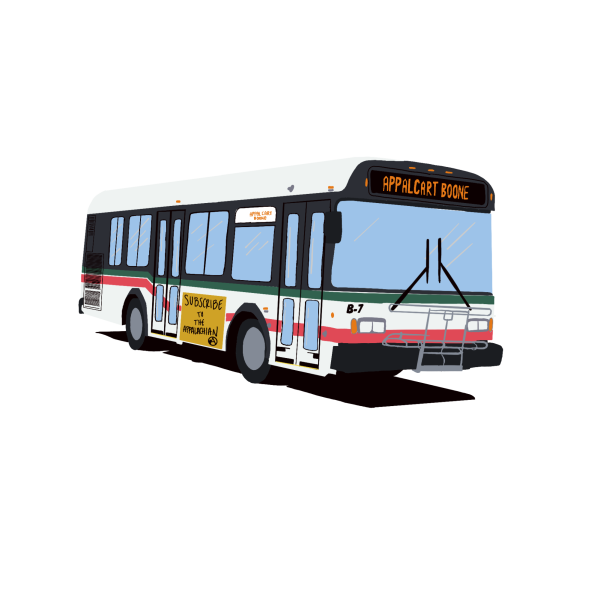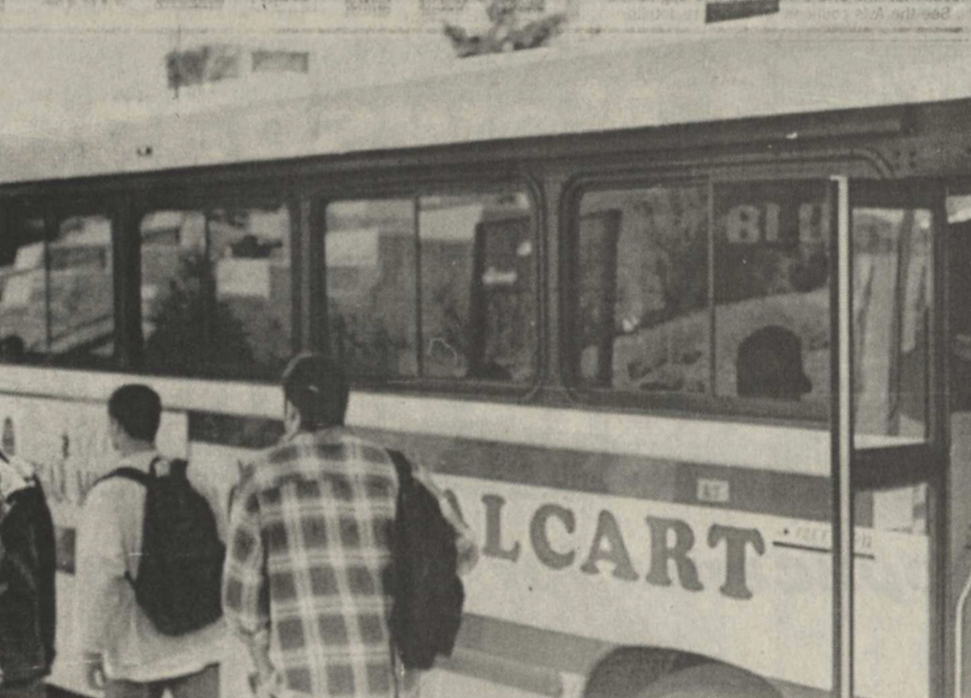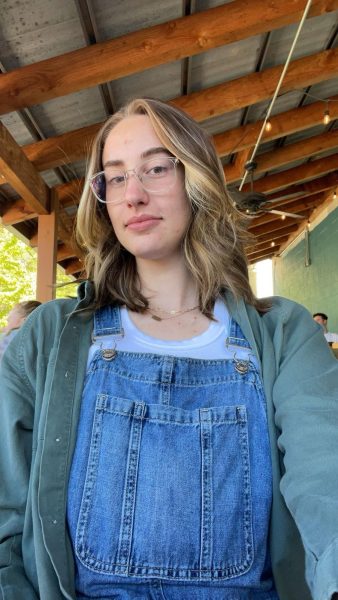As App State celebrates its 125th anniversary in 2024 and students reflect on the history present on campus, it would be remiss not to acknowledge AppalCart, which has been providing public transportation for students and members of the Boone community for decades.
Beginning as the Watauga County Transportation Authority in January 1980 and rebranding as AppalCart in October 1981, AppalCart and its drivers have adapted to the needs of App State and Boone to provide public transportation for over 40 years.
“AppalCart is no longer considered a small rural system by many across the state of NC and across the country,” wrote current AppalCart director Craig Hughes in an email. “AppalCart continues to work with the university to identify efficient ways to move students around campus and the Town of Boone.”
The first real-time bus tracking app, NextBus, was developed in 2015. Prior to this innovation, students and drivers had to rely on other methods of tracking buses to get from place to place in a timely fashion.
“They would just call AppalCart dispatch and ask them where the bus was at,” said Pop 105 Route driver Louis Ogletree, who has worked for AppalCart for 22 years. “They wouldn’t know where the bus was if they didn’t have a printed schedule.”
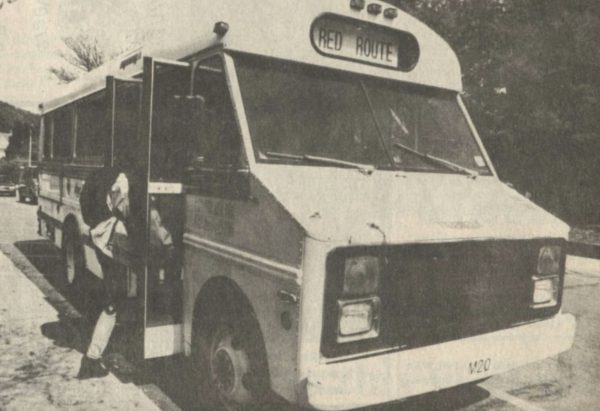
The printed schedules, which sit toward the front of every AppalCart bus, were once the primary method for App State students and Boone community members to track where a bus was at any given time. While anyone with a smartphone has the option of downloading the ETA SPOT app to see where the buses are in real-time, the printed schedules are still available for those who may not be used to the app’s interface or the AppalCart bus route operations.
Today AppalCart operates on a consistent schedule, but it was not always this way. Within five years of its founding, AppalCart changed directors three times until former director Christopher Turner, who served in the role from September 1985 to June 2015.
When Turner became director, AppalCart was in the process of scaling back its reach, reducing from four routes to two. The organization did not have any actual buses at the time either, Turner said.
“The first bus that we got wasn’t even really a bus, it was more of a trolley, cause we thought it would increase ridership if we had something unique looking,” Turner said. “Once we got transit buses, students weren’t as interested in the trolley anymore as they were in having more seats.”
The trolley that served as one of the first AppalCart buses was eventually sold to Edenton, where it is now used for historical tours, Turner said.
By the end of his tenure, the number of routes increased to 12, with high-capacity Gillig buses becoming the new standard for AppalCart transportation.
AppalCart prides itself on its history of adapting to the needs of Boone according to its website. As early as 1982, AppalCart began using lift-equipped vans to assist disabled passengers. In 1986, they introduced the Express Route to alleviate overcrowding on the Red Route.
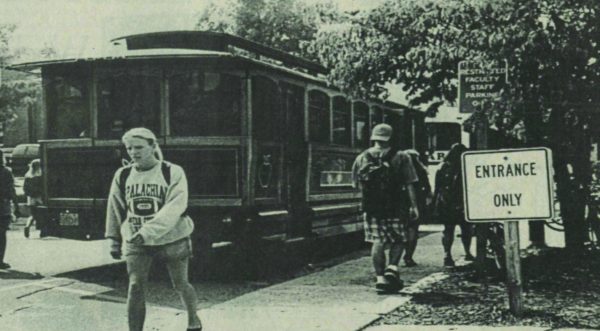
The year 2018 saw a major reconfiguration of the AppalCart routes, resulting in the current total of 14 routes during regular university operations, eight routes during university breaks and three Night Owl routes for those who need transportation at later times than are typically available.
Despite how much AppalCart has evolved over the past four decades, they are still committed to improving its transportation going forward. According to Hughes, AppalCart has received funding from the NC Volkswagen Settlement Grant to purchase their first electric bus and charging station, an initiative that is still in the process of expanding. AppalCart also plans to introduce its first double-decker bus sometime in 2025 to relieve current overcrowding on its buses.
Over the course of its 43-year history, AppalCart has served App State, the town of Boone and Watauga County as a whole with consistent transportation, a practice they hope to continue long into the future.
“We keep trying new things to help the town, the county and the university,” Turner said. “I enjoyed my time serving as AppalCart director, and I’m glad to see that it’s still growing and meeting the needs of all the folks who are in need of transportation service in the Boone area.”
As students step onto one of the many AppalCart buses to take them wherever their heart desires, work goes into making that journey possible on both a small and large scale. From the drivers to directors, many AppalCart employees have served the App State community for so long, forming the backbone of transportation in Boone.
